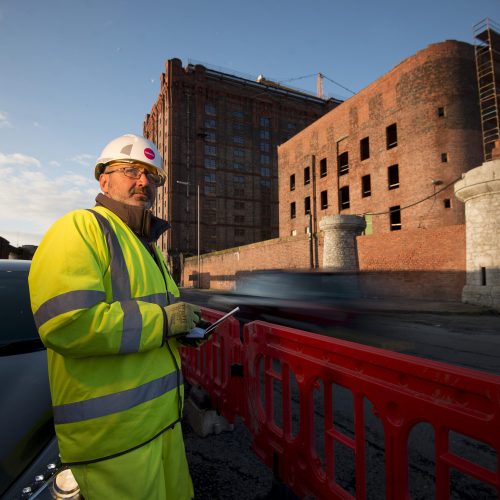Engineering is all about designing and building things that work. In other words, systems or structures that function effectively to meet a defined need.
It’s not hard to appreciate how an engineering mindset helps when it comes to shaping urban environments, including the role of private cars in those systems. An engineering approach to town planning can help create environments that are pleasant to live in, sustainable and which make access to all the things we need for everyday life straightforward.
Sustainable Urban Living
Nearly every town centre has a vision that includes more people living there, with excellent access to active and public transport routes. This represents an effective way to optimise how we use land and resources.
There’s a lot of engineering involved in making that not only possible, but deliverable in a sustainable way. Multimodal transport systems and hubs are essentially the arteries and organs that bring the whole system to life and sustain it. A ‘pedestrian-friendly streetscape’ is an attractive goal – engineering one takes a lot of detailed work.
At its core, engineering is data-driven and deals with real-world rather than ideal theoretical challenges. Human behaviour always has to be factored-in. And the most likely scenario is that – despite appreciating the benefits of safe active transport – many future town-centre dwellers will still need or want access to their own cars.
Engineered Parking Solutions
For town centre living to be an attractive option parking will have to be available and close by. Large scale on-street parking isn’t viable. It involves too much land being dedicated to giving cars somewhere to rest. And, of course, there’s the problem of how those car batteries can be recharged.
Engineering offers a solution. The highly flexible modular parking system developed by Octavius and Siderpark is perfect for small-footprint low-rise multi storey car parks. These are ideal for slotting into densely populated urban areas. They’re designed to accommodate EV charging stations and can also incorporate PV panels for on-site generation of renewable energy.
And if behaviour or demand changes over time, they can be reduced in size or replicated altogether without a major demolition project.
You can read more about these approaches through our case studies and through our resource centres. Or contact Mike Todd (mike.todd@octavius.co.uk).


